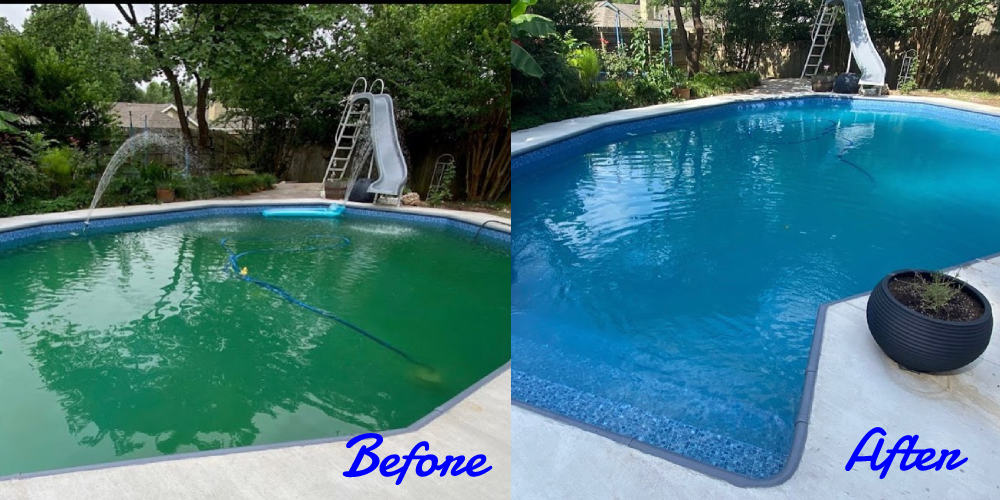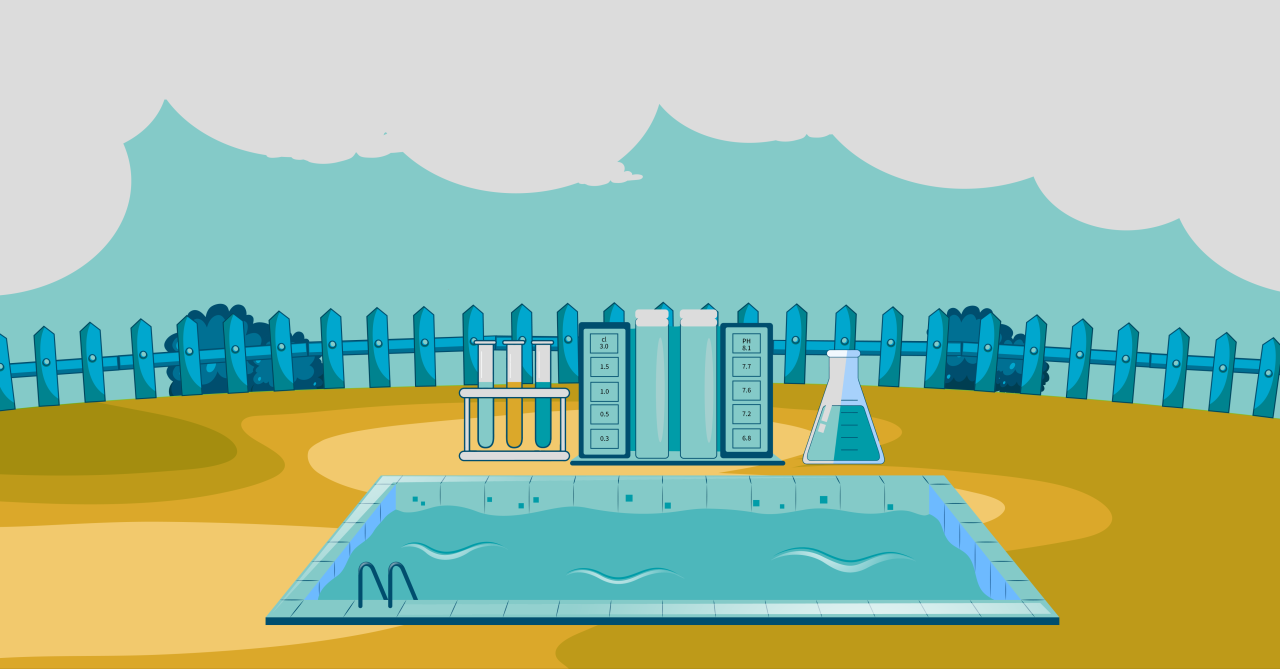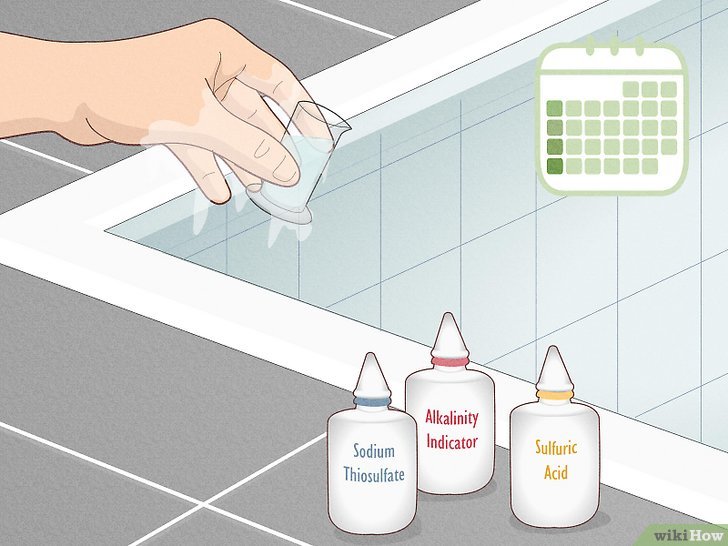Understanding Pool Alkalinity

Pool alkalinity plays a crucial role in maintaining a healthy and comfortable swimming environment. It acts as a buffer, resisting drastic pH swings that can irritate swimmers’ eyes and skin. Understanding how alkalinity functions and its impact on pool water is essential for responsible pool maintenance.
The Role of Alkalinity in Pool Water Chemistry
Alkalinity is a measure of the pool water’s capacity to neutralize acids. This buffering capacity is vital because it prevents significant fluctuations in pH, a critical measure of acidity or alkalinity. A stable pH range is essential for the effectiveness of disinfectants, the health of pool equipment, and the comfort of swimmers. Without sufficient alkalinity, the pH can fluctuate widely, leading to discomfort and potential damage.
Effects of High Alkalinity on Pool Water
High alkalinity levels in a swimming pool can lead to several undesirable consequences. One major concern is that it can make it difficult to adjust the pH. Maintaining a consistent and balanced pH is crucial for the effectiveness of chlorine and other disinfectants. High alkalinity can also hinder the ability to achieve and maintain the desired pH range. This can create discomfort for swimmers and potentially harm pool equipment. In extreme cases, excessive alkalinity can cause scaling and staining in the pool, reducing its aesthetic appeal and potentially clogging pool filters.
Ideal Range of Alkalinity for a Swimming Pool
The ideal range for pool alkalinity typically falls between 80 and 120 parts per million (ppm). This range allows for effective pH control and minimizes the risk of issues associated with excessively high or low alkalinity levels. Maintaining this range ensures the effectiveness of disinfectants, the comfort of swimmers, and the longevity of pool equipment.
Potential Consequences of Neglecting Proper Alkalinity Levels
Failing to maintain proper alkalinity levels can lead to a variety of problems. Unstable pH levels can cause discomfort to swimmers, potentially leading to eye and skin irritation. Frequent pH adjustments become necessary, increasing chemical costs and potentially stressing pool equipment. Inadequate alkalinity can also lead to scaling or corrosion of pool surfaces and equipment, reducing the pool’s lifespan and requiring costly repairs. A consistent, balanced alkalinity level is vital for the overall health and longevity of the pool environment.
Comparison of Alkalinity Levels and Their Impacts
| Alkalinity Level (ppm) | Impact on Pool Water |
|---|---|
| High (above 120 ppm) | Difficult pH adjustment, potential scaling, staining, reduced disinfectant effectiveness, potential equipment damage. |
| Medium (80-120 ppm) | Stable pH, effective disinfectant action, minimal risk of scaling or staining, comfortable swimming experience. |
| Low (below 80 ppm) | Frequent pH fluctuations, ineffective disinfection, potential corrosion of metal components, increased risk of eye and skin irritation, reduced comfort for swimmers. |
Identifying High Alkalinity

High alkalinity in a swimming pool, while seemingly innocuous, can lead to various problems, impacting water clarity, and potentially causing skin and eye irritation for swimmers. Understanding the signs and utilizing proper testing methods are crucial for maintaining a healthy and enjoyable swimming experience.
High alkalinity, a measure of the pool water’s buffering capacity, can manifest in several ways. Regular testing and appropriate adjustments are essential to prevent issues and ensure optimal water quality.
Common Signs of High Alkalinity
High alkalinity often manifests as a range of issues in a swimming pool. These include difficulty in controlling pH levels, making it harder to maintain the desired pH range, as well as water that feels slippery or soapy to the touch. Additionally, excessive alkalinity can contribute to cloudy or hazy water, making it less inviting for swimmers.
Importance of Regular Water Testing for Alkalinity, How to lower alkalinity in pool
Regular water testing is crucial for maintaining optimal pool conditions. By monitoring alkalinity, pH, and other key water parameters, you can proactively address potential issues before they escalate, preventing costly repairs and ensuring a safe and comfortable swimming environment.
Using a Pool Testing Kit to Measure Alkalinity
Pool testing kits provide a convenient and affordable method for accurately determining alkalinity levels. These kits usually contain test strips or liquid reagents that react with the pool water, indicating the alkalinity level through color changes. Always follow the manufacturer’s instructions for accurate results.
Step-by-Step Guide to Testing Pool Water for Alkalinity
A consistent testing routine is essential for maintaining ideal pool water conditions. This detailed guide will help you conduct reliable alkalinity tests.
- Gather necessary materials: your pool testing kit, a clean container, and distilled water (if required by the kit instructions).
- Collect a water sample: Carefully scoop a sample of pool water into the container, ensuring the sample is representative of the entire pool.
- Follow the kit instructions: Carefully follow the instructions provided by the kit manufacturer, which may include adding reagents or using test strips. Pay close attention to the specific procedures for accurate results.
- Interpret the results: Compare the color change in the test solution or the color of the test strip to the color chart provided with the kit. This will give you the numerical value of your pool water’s alkalinity level.
- Record the results: Keep a log of your alkalinity readings. This helps track trends and makes it easier to manage water chemistry over time.
Pool Water Testing Methods Comparison
Different methods offer varying levels of accuracy and convenience.
| Method | Advantages | Disadvantages |
|---|---|---|
| Test Strips | Easy to use, inexpensive, portable. | Less precise than liquid reagents, color matching can be subjective. |
| Liquid Reagents | More accurate measurements, provides a numerical value. | Requires more steps, may require specific equipment. |
| Digital Test Kits | Quick and precise measurements, often provide multiple readings. | More expensive, requires battery maintenance. |
Methods to Lower Alkalinity

Maintaining the proper alkalinity level in your swimming pool is crucial for water clarity, preventing scaling, and ensuring a comfortable bathing experience. Incorrect alkalinity levels can lead to a variety of issues, from irritating eye and skin conditions to premature equipment wear. Understanding how to effectively lower alkalinity is a vital part of responsible pool ownership.
Common Alkalinity Reduction Methods
Several effective methods exist for reducing pool alkalinity. These methods generally involve the addition of specific chemical compounds designed to lower the pH of the water. Careful monitoring and precise application are key to achieving the desired results without causing unintended side effects.
- Using Alkalinity Reduction Chemicals: These specialized chemicals are formulated to react with the pool water, gradually lowering the alkalinity level. Different products contain various active ingredients, each impacting the water chemistry in specific ways. Understanding the composition of the product and its intended effect is crucial for safe and effective application.
- Performing Partial Water Changes: Draining a portion of the pool water and replacing it with fresh water is another way to lower alkalinity. This method is particularly useful for significantly reducing alkalinity levels, but it can also be expensive in terms of water usage and the amount of work required.
- Adjusting pH Levels: Maintaining a balanced pH level within the ideal range is important for maintaining water quality and reducing issues associated with high alkalinity. A lower pH level often goes hand in hand with lower alkalinity, though not always. This method should be combined with using specific alkalinity reducers for best results.
Comparison of Alkalinity Reduction Products
The effectiveness of different alkalinity reduction products can vary based on the specific chemical composition and the amount needed to achieve the desired reduction in alkalinity. Choosing the right product depends on factors such as the size of the pool, the current alkalinity level, and the desired final alkalinity.
| Product | Dosage | Advantages | Disadvantages |
|---|---|---|---|
| Sodium Bisulfate | Follow product instructions; typically measured in ounces or grams per 10,000 gallons of water. | Generally effective, often affordable, and readily available. | Can potentially lower pH too quickly if not monitored carefully, leading to acid shock. |
| Muriatic Acid (Hydrochloric Acid) | Follow product instructions; typically measured in ounces or milliliters per 10,000 gallons of water. | Highly effective in lowering alkalinity, relatively inexpensive. | Requires careful handling and application due to its corrosive nature. Must be handled with extreme caution and appropriate safety gear. |
| Alkalinity Reducing Granules | Follow product instructions; typically measured in ounces or grams per 10,000 gallons of water. | Often a slower, more controlled reduction of alkalinity, allowing for gradual adjustment. | May be more expensive than other options. |
Using Alkalinity Reducers
The procedure for using alkalinity reducers is straightforward, yet crucial for maintaining a safe and effective pool environment. Proper application and adherence to the product instructions are essential for optimal results and to avoid harming pool equipment or compromising the water quality.
Adding Alkalinity Reducers to the Pool
Always follow the manufacturer’s instructions for the specific alkalinity reducer being used.
Adding alkalinity reducers to the pool should be done in a well-ventilated area, using appropriate safety equipment like gloves and eye protection. Precise measurement of the product is critical. It’s recommended to add the reducer to a separate container of water first, then slowly pour it into the pool while stirring gently. Avoid direct contact with skin or eyes. Monitoring the alkalinity levels regularly after adding the reducer is crucial. This will ensure that the proper amount of product was used to lower the alkalinity level. Test the water using a reliable test kit, and adjust the dose as necessary.
Maintaining Low Alkalinity

Maintaining a stable and low alkalinity level in your pool is crucial for its health and longevity. This involves more than just a one-time adjustment; it necessitates a proactive approach to prevent future issues and ensure consistent water quality. Properly maintaining low alkalinity levels significantly reduces the risk of scaling, corrosion, and other problems that can arise from fluctuations.
Maintaining a consistently low alkalinity level is important because it prevents scale buildup, which can clog filters and pipes, and reduces the potential for corrosion of pool equipment and surfaces. This proactive approach also leads to more efficient use of chemicals, reducing costs and environmental impact. Stable alkalinity levels are a foundation for other important water parameters, leading to a healthier and more enjoyable swimming experience.
Importance of Regular Testing and Adjustments
Consistent monitoring of pool alkalinity is essential to prevent fluctuations and maintain optimal levels. Regular testing ensures that alkalinity remains within the desired range, preventing problems like cloudy water, ineffective sanitizers, and equipment damage. This proactive approach is more effective than reacting to issues after they arise.
Alkalinity Testing Schedule
A regular schedule for testing and adjusting alkalinity levels is vital for maintaining consistent water quality. The frequency of testing and adjustments depends on factors like the pool’s size, usage frequency, and climate. For a typical pool, weekly testing and adjustments are recommended during the swimming season, while bi-weekly testing might suffice during periods of less frequent use. This schedule should be adjusted based on observed changes in the water.
Preventing Future Alkalinity Issues
Several preventative measures can minimize the risk of future alkalinity issues. These include using appropriate amounts of chemicals, maintaining proper water circulation, and regularly cleaning the pool’s filtration system. Proper water chemistry management, including maintaining proper alkalinity levels, will improve the longevity of pool equipment.
Role of Proper Water Balancing
Proper water balancing is crucial for maintaining low alkalinity. This encompasses maintaining appropriate levels of pH, calcium hardness, and total alkalinity. Maintaining a balanced pool environment through regular monitoring and adjustments ensures that all chemical interactions occur optimally. These interactions contribute to the stability of the pool water, preventing fluctuations and associated issues.
Creating a Pool Alkalinity Maintenance Schedule
Creating a pool alkalinity maintenance schedule involves several key steps. First, establish a regular testing frequency, ideally weekly. Second, note the baseline alkalinity level and any fluctuations. Third, document the necessary adjustments and the amounts of chemicals used to achieve the target alkalinity. Finally, regularly review and update the schedule based on pool use, climate, and observed water conditions.
| Day | Action |
|---|---|
| Monday | Test alkalinity, adjust if necessary |
| Wednesday | Check pH and calcium hardness, adjust if needed |
| Friday | Inspect pool equipment, clean filter if required |
“Consistency is key in maintaining low alkalinity levels, preventing future issues, and ensuring a healthy and enjoyable swimming experience.”
Avoiding Common Mistakes: How To Lower Alkalinity In Pool

Maintaining the ideal pool alkalinity requires careful attention to the process. Inaccurate measurements or improper dosages can lead to undesirable outcomes, impacting the water quality and potentially causing damage to the pool equipment. This section will highlight common pitfalls to avoid and the importance of precise procedures.
Precise Measurements and Dosages are Crucial
Accurate measurements are fundamental to successful alkalinity adjustments. Using a reliable test kit and following the manufacturer’s instructions ensures precise readings. Variations in the test kit’s accuracy or incorrect readings from the pool water can lead to inaccurate alkalinity calculations and result in inadequate or excessive treatment. Furthermore, consistent and precise dosages of alkalinity reducers are vital. Overestimating or underestimating the required amount can significantly affect the final alkalinity level.
Risks of Over-Treating the Pool Water
Adding too much alkalinity reducer can significantly lower the alkalinity level beyond the desired range. This can lead to a number of problems. The pool water may become overly acidic, increasing the risk of corrosion to pool equipment, such as metal components and pipes. This can result in costly repairs or replacements. Moreover, overly acidic water can cause discomfort for swimmers.
Potential Problems from Incorrect Alkalinity Reduction
Incorrect alkalinity reduction can manifest in several problematic ways. A drastic drop in alkalinity can result in irritation or discomfort for swimmers, as the water becomes excessively acidic. Furthermore, a significant fluctuation in alkalinity can cause scaling and precipitation in the pool, affecting the aesthetic appeal and potentially harming the pool’s filtration system. Additionally, imbalances in water chemistry can contribute to the growth of algae and other microorganisms.
Avoiding Over-Treatment
Over-treating the pool water is a frequent mistake. To prevent this, it is crucial to closely monitor the alkalinity level during the treatment process. Regular testing is essential to determine the effectiveness of the alkalinity reducer. Using a calibrated test kit and following a gradual reduction strategy are key to avoiding drastic changes in alkalinity. A gradual reduction is often recommended to minimize the impact on water chemistry. Start with a smaller dose and observe the results before adding more. This ensures that the desired level is achieved without causing adverse effects.
Example of a Gradual Reduction Strategy
Suppose your initial alkalinity is 120 ppm, and the target is 80 ppm. Instead of adding a large dose to lower it quickly, aim for a 10 ppm reduction per day. This gradual approach gives the pool water time to adjust, minimizing the risks of over-treatment and ensuring the target alkalinity is reached safely. If the pool water is especially sensitive, a smaller reduction rate can be applied.
Troubleshooting High Alkalinity

High alkalinity in a swimming pool can lead to various issues, impacting water clarity, comfort, and the lifespan of pool equipment. Understanding the potential causes and implementing appropriate solutions is crucial for maintaining a healthy and enjoyable swimming experience. Addressing these problems proactively can prevent costly repairs and ensure consistent pool performance.
High alkalinity levels, while not directly harmful to swimmers, can create conditions that negatively impact the effectiveness of other pool chemicals and potentially lead to scaling, cloudy water, and discomfort for those using the pool. Proactive monitoring and adjustments are vital for maintaining a balanced and safe pool environment.
Potential Causes of High Alkalinity
Several factors can contribute to elevated alkalinity levels in a swimming pool. Improper water balancing practices, insufficient water changes, and certain types of water sources can all contribute to high alkalinity. Understanding these contributing factors allows for targeted solutions to address the specific cause.
Troubleshooting Guide for Common Alkalinity Problems
A systematic approach to troubleshooting high alkalinity is essential. First, thoroughly analyze the pool water chemistry, paying close attention to other water parameters such as pH and calcium hardness. This will provide a clearer picture of the underlying cause and the most effective course of action. Next, identify the possible sources of the problem, including the source water itself, or any recent additions of chemicals or water. This methodical approach enables a precise diagnosis and targeted resolution.
Addressing Issues Related to Alkalinity Levels
Once the potential causes have been identified, implementing appropriate solutions is key. These solutions might include adjusting the alkalinity levels with specific chemicals, performing water changes to dilute the existing high alkalinity, or even considering a combination of approaches. A well-planned strategy ensures the problem is tackled effectively and efficiently, preventing recurring issues.
Methods for Resolving Issues with High Alkalinity
Several methods can be used to reduce high alkalinity levels in a pool. A crucial aspect of this process is carefully following the instructions provided with the chemicals being used. Incorrect application can worsen the problem. Accurate measurement and precise application are vital for achieving optimal results.
Table of Potential Causes and Solutions for High Alkalinity Problems
| Potential Cause | Solution |
|---|---|
| Hard water source | Increase the frequency of water changes. Consider using a water softener if feasible. |
| Insufficient water changes | Perform more frequent water changes to dilute the existing high alkalinity. |
| Overuse of alkalinity increasers | Reduce the amount of alkalinity increaser used or avoid using it altogether if the source is identified. |
| Poor water filtration system maintenance | Ensure regular cleaning and maintenance of the pool’s filtration system. |
| Improper chemical balancing | Review and correct the chemical balancing process, ensuring accurate measurements and proper application. |
Safety Precautions

Proper handling of pool chemicals is crucial for your safety and the well-being of others. Neglecting safety precautions can lead to severe health issues, including skin irritation, eye damage, and respiratory problems. This section details essential safety measures for handling pool chemicals, emphasizing the importance of responsible storage and disposal.
Chemical Handling Procedures
Handling pool chemicals requires careful attention to detail and adherence to safety guidelines. Always wear appropriate personal protective equipment (PPE) when working with chemicals. Read and understand the safety data sheets (SDS) for each chemical before use. Never mix chemicals unless explicitly directed in the product instructions. Ensure adequate ventilation in the area to minimize inhalation risks. Dilute concentrated chemicals according to manufacturer instructions, and avoid direct skin contact with any chemical.
Chemical Storage and Disposal
Safe storage is as important as proper handling. Store pool chemicals in a cool, dry, and well-ventilated area, away from heat sources, food, and other incompatible materials. Keep containers tightly sealed and clearly labeled to prevent accidental mixing or misuse. Always follow the manufacturer’s instructions for storage temperature and humidity. When disposing of used chemicals, follow local regulations for proper waste disposal. Never pour chemicals down the drain or into the environment. Empty containers should be properly rinsed and disposed of as hazardous waste. Dispose of empty chemical containers in designated hazardous waste receptacles, or according to local guidelines.
Importance of Safety Gear
Wearing appropriate safety gear is paramount for protecting yourself from chemical hazards. This includes safety glasses, gloves, and a long-sleeved shirt and pants. Eye protection is critical to prevent chemical splashes from entering the eyes. Gloves protect skin from contact with chemicals. Long sleeves and pants shield exposed skin from splashes and prolonged contact. Choose appropriate PPE based on the specific chemicals you’re handling. Consider the potential risks and choose the most protective equipment possible. Always double-check the condition of your safety gear to ensure its effectiveness.
Risks of Neglecting Safety Procedures
Neglecting safety procedures when handling pool chemicals can lead to severe consequences. Accidental exposure to chemicals can cause skin burns, eye irritation, respiratory problems, and even long-term health issues. Improper chemical storage can create fire hazards or expose others to potentially dangerous substances. Mishandling chemicals can contaminate the environment, harming aquatic life and potentially impacting human health. Accidents involving pool chemicals can lead to costly repairs, medical expenses, and legal repercussions.
Safety Guidelines and Recommended Equipment
| Safety Guideline | Recommended Equipment |
|---|---|
| Always read the Safety Data Sheet (SDS) before handling any pool chemical. | SDS document for each chemical. |
| Wear appropriate personal protective equipment (PPE). | Safety glasses, gloves, long-sleeved shirt, pants. |
| Store chemicals in a cool, dry, well-ventilated area, away from heat and incompatible materials. | Designated chemical storage cabinet or area. |
| Follow local regulations for chemical disposal. | Proper waste disposal containers for hazardous materials. |
| Never mix chemicals unless explicitly instructed in the product label. | Chemical compatibility chart (if available). |
FAQ Section
How to lower alkalinity in pool – What are the signs of high alkalinity in my pool?
Cloudy water, scaling on pool surfaces, and difficulty in maintaining other water balance levels are often indicators of high alkalinity. Regular testing is key to detecting issues promptly.
How often should I test my pool water for alkalinity?
Testing your pool water for alkalinity, and other water chemistry factors, should be done at least once a week, or more frequently if you notice any unusual changes in the water. Adjusting the alkalinity based on the results will prevent issues from arising.
What are the risks of adding too much alkalinity reducer?
Adding too much alkalinity reducer can lower the alkalinity level too quickly, potentially leading to issues like corrosion or pH imbalance. Always follow the product instructions precisely.
Can I lower alkalinity without using chemicals?
No, using chemicals is the most effective way to lower alkalinity. While some methods might seem natural, they’re not usually sufficient to bring levels back to the desired range.